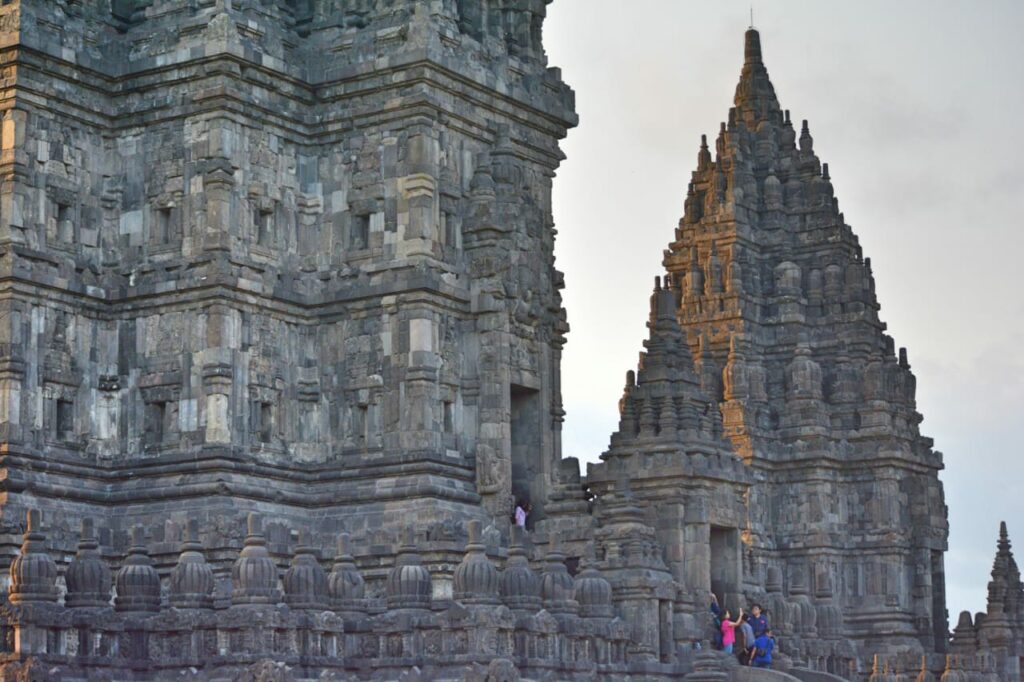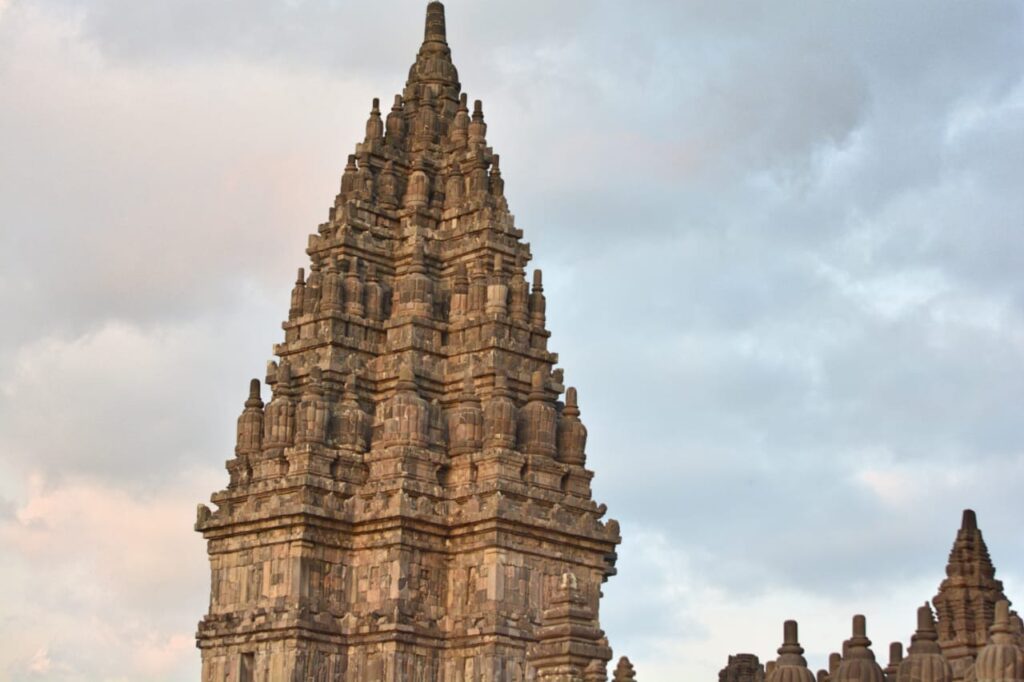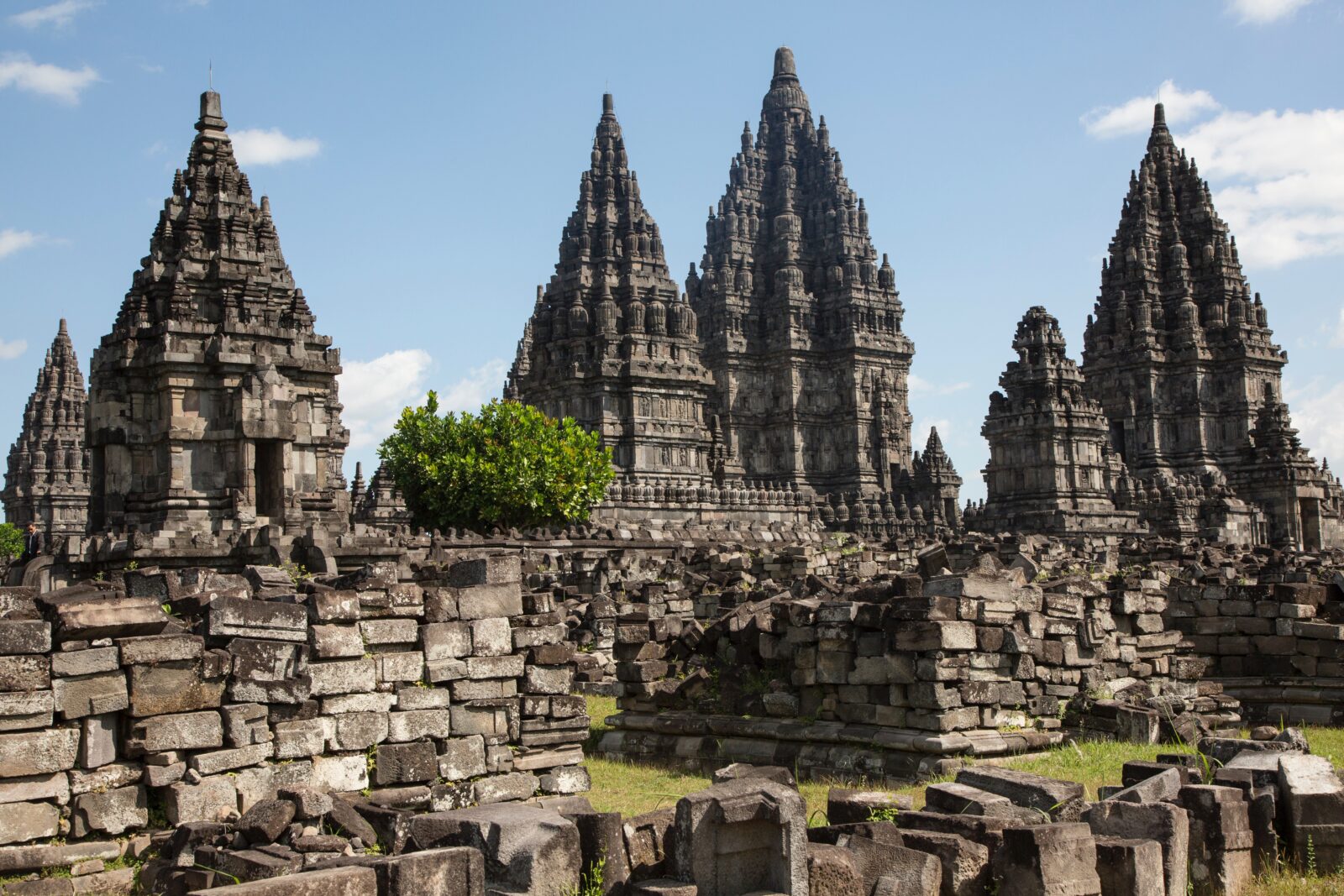
Anticipation was at an all-time high in our little group of travelers as we boarded the flight to Jogjakarta to see the Prambanan Temple Complex, Indonesia. For my mother, at 77, it was her first trip abroad. My niece, a film student, was excited at the prospect of spectacular photography and my 9-year-old daughter – at the idea of a holiday with her grandmom. My husband’s enthusiasm was evident in the preparations and research he had done. As for me, it was the thought of getting to see something that indisputably established the fact that the rich culture and history of my country had stretched more than 8,000 km beyond its Indian shores.
The UNESCO World Heritage Site of Prambanan, is a group of temples dedicated to the triumvirate of gods revered in India – Brahma, the Creator; Vishnu, the Preserver; and Shiva, the Destroyer. There were many questions buzzing in my head: who had built these temples; how had Hindu gods come to be revered so far from the land of their mythological existence; and how had they survived for hundreds of years?
We had booked ourselves in Jogjakarta or Yogyakarta, or Jogja as the locals affectionately call it, at a cozy homestay called Bedhot run by an artist who loves vintage cars and has a garage full of WWII vintage BMWs. The Prambanan temple complex is 20 km from Jogjakarta and takes about 40 min to reach. You can visit it early in the morning – it opens at 6 am – or you can go and watch the sun setting in the backdrop of the silhouette of the temple shikhars. We timed our arrival just before 5 pm when the entry closes, having pre-booked our tickets, which although a little steep, was well worth it. The other attraction at the site is the Ramayana Ballet performed against the spectacular backdrop of the temples.

As we drove towards the temple town, our guide Aan told us the folklore surrounding Prambanan. Like the innumerable stories hidden in our own epics, the story of Roro Jonggrang, while explaining the existence of the magnificent temple complex, may not have much basis in fact. Legend has it that once upon a time there were two neighbouring kingdoms, one was ruled by a wise and benevolent king and the other by a man-eating giant. The good king sought to expand his kingdom and went to war against the giant, defeating him. When the victorious king’s handsome son, Bandung Bondowaso marched into the evil king’s palace to claim it, he came upon his beautiful daughter, Roro Jonggrang (meaning Slender Maiden). He fell in love with her instantly and asked her to marry him. However, how could she marry her father’s killer? So, rather than earn his wrath by refusing outright, she laid two impossible conditions for the marriage.
First, she asked him to make a deep well called Jalatunda and second, to construct 1,000 temples in one night. The prince had supernatural powers and summoned all the spirits and demons to make the well. When it was finished, he proudly showed his accomplishment to Roro Jonggrang who then pushed him into the well, and buried him under stones with the help of her father’s demon helpers. Bondowaso, using his supernatural powers managed to get out and although angry with the duplicitous princess, decided to give her another chance and got cracking with making 1,000 temples. When he had completed 999 and started work on the last one, Roro Jonggrang panicked but had another ace up her sleeve. She ordered all her maids to light hay fires to simulate dawn and pound rice, a routine early morning activity. The roosters also obliged by crowing much before actual dawn. This fooled the demon helpers into scurrying away as they feared the Sun, thus, leaving the last temple unfinished. Bondowaso realised that he had been tricked, enraged he cursed Roro Jonggrang and turned her into stone. It is believed that the statue of Durga Mahisasuramardini in the Shiva temple at Prambanan is the princess still standing in testimony to her cursed fate.
All prepped up by the fascinating story, we finally arrived at our destination. Since the temple complex can’t be seen from the entry gate, a short walk took us to our first view of the Prambanan temples, which was in one word, breathtaking! A large number of visitors notwithstanding, there is a timeless quality about it that’s difficult to explain. The temples stand there, the glow of the setting Sun giving them a divine aura. Scattered remains of the more than 200 smaller temples originally arranged in 4 concentric square rows, are all around. The three main temples with their tall shikharas rise on an elevated platform surrounded by a boundary wall. The huge blocks of stone that make up the temples are not cemented – they are simply placed on top of one another and interlocked with grooves and matching raised parts on alternate blocks. The vision is nothing short of spectacular.

The temples were constructed in the 9th century AD by the Hindu kings of the Sanjaya dynasty, believed to mark the return to power of a Hindu dynasty after almost a century of Buddhist rule. After being the center of the Java court for all important activities, the complex fell into disuse when the capital was shifted. Subsequently, the entire temple complex got buried following the eruptions of the nearby Merapi volcano. It lay forgotten till the early 19th century, when the British occupied the Dutch East India Company territories. A British surveyor chanced upon the ruins and detailed surveys began, resulting in more looting than its reconstruction. In 1918, the Dutch began reconstruction with serious restoration starting only in 1930. The main Shiva temple was finally restored in 1953 and inaugurated by Sukarno.

Hinduism is believed to have come to Indonesia in the First Century AD mainly through trade relations, possibly while the Chola dynasty was ruling in southern India. The Prambanan temples follow the traditional Hindu temple architecture style of southern India. Not only does the temple structure depict the three loks – Bhurlok peopled by mortals; Bhuvarlok where the aesthetics and minor gods lived; and Svarlok – the highest realm reserved for gods, but also has bas relief depictions of the Ramayana on its walls. To follow the story you move in a clockwise pradakshina around the temple. The serene beauty of the complex viewed at sunset is sublime, followed by the piece de resistance, the Ramayana ballet. The lit-up temples in the background greatly enhance the performance, which features the stage being set on real fire by Hanuman in Ravana’s court.
The journey back to Jogjakarta was one of contented silence, with each one of us lost in our own thoughts, recalling the spectacular scenes that are now etched in our memories forever, much like the stories into the stones at Prambanan.

Share
Photos credit: Akshita Dhaka

